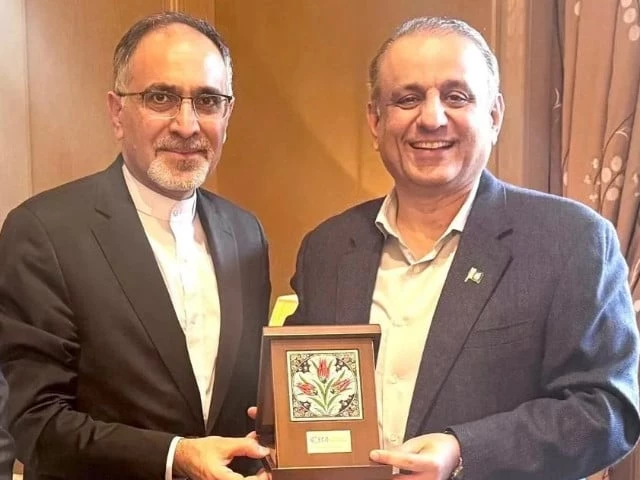Business
Kodak faces financial struggles even as Gen Z sparks a film resurgence

Rolls of Kodak Gold film hang on a shelf at the Precision Camera & Video store on August 12, 2025 in Austin, Texas.
Brandon Bell | Getty Images
Clair Sapilewski has dozens of rolls of camera film ready to use in her cupboard at all times.
A photography major at American University, the 21-year-old said she always keeps her film stocked to achieve that aesthetic that only film cameras can capture.
“It teaches you how to slow down, how to look at things more carefully and how to choose your shots more wisely,” she said.
It’s part of an ongoing trend as members of Generation Z have taken an interest in film cameras. Sapilewski said while her professors taught her the basics, she and her friends have used their film cameras to develop photos that their iPhones can’t quite replicate.
And in her college circle, the most popular brand for camera film is Eastman Kodak, a company she calls a “household name.”
“Pretty much everybody uses Kodak films — the average film user, when they reach for film, is going to reach for Kodak,” Sapilewski said.
But on the other side of the lens, Kodak may be singing a different tune.
The 133-year-old photography company indicated in its second-quarter earnings report on Monday that its finances “raise substantial doubt” in its ability to continue operations as a going concern.
The company reported a net loss of $26 million, down 200% from net income of $26 million for the second quarter of 2024. Kodak also posted a 12% decrease in gross profit with millions in debt obligations.
“Kodak has debt coming due within 12 months and does not have committed financing or available liquidity to meet such debt obligations if they were to become due in accordance with their current terms,” the company wrote in a regulatory filing.
Shares of the company are down more than 15% year to date.
Kodak plans to terminate its retirement pension plan and a company spokesperson told CNBC that Kodak aims to use money that it will receive from the settlement to pay off its debts.
“Kodak is confident it will be able to pay off a significant portion of its term loan well before it becomes due, and amend, extend or refinance our remaining debt and/or preferred stock obligations,” the spokesperson said.
This isn’t the first time the company has faced struggles.
Founded in Rochester, New York, in the late 1800s, Kodak rode the wave of photography with a goal of simplifying the process for consumers. But as the era of digital technology took over, the company faced increasing struggles with staying relevant as cameras moved beyond film and disposables.
In the 2000s, the company tried to keep up with the growing trend of digital cameras but struggled, according to Melius Research analyst Ben Reitzes, who said Kodak was ignoring concerns at the time about the evolving macroenvironment.
“Digital technology wasn’t ready right away to cut sales of film — but common sense told us differently,” Reitzes wrote in a March note. “At the time, Kodak management told us that film would co-exist with digital cameras and more photos would be taken — and more would need to be printed by Kodak.”
Instead, Kodak filed for bankruptcy in 2012. It reemerged a year later in 2013 with four main business components: print, advanced materials and chemicals, motion picture, and consumer, which includes cameras and accessories.
A ‘rebellion against digital perfection’
In recent years, however, the retro camera trend has been seeing a resurgence.
In 2020, then-General Manager Ed Hurley told NBC News that Kodak made more than twice the number of film rolls in 2019 than it made in 2015.
And on last year’s third-quarter earnings call, Kodak CEO Jim Continenza said the company was experiencing such high demand for film that it needed to upgrade its Rochester factory.
“Our film sales have increased,” Continenza said at the time. “As we continue to see our commitment and our customer commitment to film, still and motion picture, we are going to continue to invest in that space and continue with that growth.”
According to Fortune Business Insights, the global cinema camera market size is fast growing and estimated to reach $535 million by 2032. The Global Wellness Institute named “analog wellness” — including pre-digital technology — its top trend for 2025.
That growth has been driven in large part by Gen Z, which has turned to old-school aesthetics in what’s been a “divorce” from the hyperrealism of digital photography, according to Alex Cooke, the editor-in-chief of Fstoppers, a photography news site.
“I think there’s this rebellion against digital perfection where film feels real in this kind of hyper-curated Instagram and TikTok world, where images are filtered and Facetuned and algorithm-tested,” Cooke said.
For members of Gen Z, who grew up in the smartphone age, Cooke said this type of photography brings a “nostalgia without lived experience,” where younger people are romanticizing a slower culture and breaking the instant feedback loop.
The aesthetics of film are also at play, Cooke added, with the unique colors and grains capturing something a smartphone could not. Ironically, social media even feeds into amplifying the trend, he said.
Using film cameras and developing that film also plays into a Gen Z trend of digital minimalism, according to Digital Camera World U.S. Editor Hillary Grigonis.
As a professional photographer, Grigonis said she’s seen Gen Z lean into the feeling of “disconnecting” when using film, which provides a more tangible photography experience than smartphones.
“Part of the rise in film photography among Gen Z is likely from that desire to disconnect and the craving for that retro aesthetic,” Grigonis said, adding that she was surprised at Kodak’s financial struggles given the overall rise in demand.
For 25-year-old Madison Stefanis, Kodak was her entry point into the camera world. A Gen Z herself, Stefanis created 35mm Co, a film camera company specifically aimed at making the photography style easy and accessible for her generation.
Stefanis said she’s seen that younger people are leaning into the emotional connection created by the delayed gratification of waiting for photos to be developed, something that’s become “lost in the digital age.”
Because she’s seen Gen Z driving the resurgence of film, Stefanis said she was “shocked” at Kodak’s declaration about its ability to continue as a going concern.
“Gen Z are really craving something they can hold in their hands,” she said. “These days, at least for myself, most of my memories live either in my mind or in my phone, so I think having actual tangible, physical objects where we can store our keepsakes and those key moments feels really special to my generation.”
Business
Gross GST collections for November stand at over Rs 1.70 lakh crore; up 0.7 per cent – The Times of India

GST collections: The Gross Goods and Services Tax (GST) collections for the month of November came in at over Rs 1.70 lakh crore. This is a rise of 0.7%, according to official data.SBI Research in a report in November had estimated that the gross domestic GST collections may come around Rs 1.49 lakh crore for November 25 (returns of October 25 but filed in Nov’25), a YoY growth of 6.8%.“Coupled with Rs 51,000 crore of IGST and cess on Import, the November GST collections thus could cross Rs 2.0 lakh crore, driven by the peak festive season demand led by lower GST rate and increased compliance while most of states experience positive gains,” SBI Research had said.This story is being updated
Business
Key Financial Deadlines That Have Been Extended For December 2025; Know The Last Date

New Delhi: Several crucial deadlines have been extended in December 2025, including ITR for tax audit cases, ITR filing and PAN and Aadhaar linking. These deadlines will be crucial in ensuring that your financial affairs operate smoothly in the months ahead.
Here is a quick rundown of the important deadlines for December to help you stay compliant and avoid last-minute hassles.
ITR deadline for tax audit cases
The Central Board of Direct Taxes has extended the due date of furnishing of return of income under sub-Section (1) of Section 139 of the Act for the Assessment Year 2025-26 which is October 31, 2025 in the case of assessees referred in clause (a) of Explanation 2 to sub-Section (1) of Section 139 of the Act, to December 10, 2025.
Belated ITR filing deadline
A belated ITR filing happens when an ITR is submitted after the original due date which is permitted by Section 139(4) of the Income Tax Act. Filing a belated return helps you meet your tax obligations, but it involves penalties. You can only file a belated return for FY 2024–25 until December 31, 2025. However, there will be a late fee and interest charged.
PAN and Aadhaar linking deadline
The Income Tax Department has extended the deadline to link their PAN with Aadhaar card to December 31, 2025 for anyone who acquired their PAN using an Aadhaar enrolment ID before October 1, 2024. If you miss this deadline your PAN will become inoperative which will have an impact on your banking transactions, income tax return filing and other financial investments.
Business
Stock Market Live Updates: Sensex, Nifty Hit Record Highs; Bank Nifty Climbs 60,000 For The First Time

Stock Market News Live Updates: Indian equity benchmarks opened with a strong gap-up on Monday, December 1, touching fresh record highs, buoyed by a sharp acceleration in Q2FY26 GDP growth to a six-quarter peak of 8.2%. Positive cues from Asian markets further lifted investor sentiment.
The BSE Sensex was trading at 85,994, up 288 points or 0.34%, after touching an all-time high of 86,159 in early deals. The Nifty 50 stood at 26,290, higher by 87 points or 0.33%, after scaling a record intraday high of 26,325.8.
Broader markets also saw gains, with the Midcap index rising 0.27% and the Smallcap index advancing 0.52%.
On the sectoral front, the Nifty Bank hit a historic milestone by crossing the 60,000 mark for the first time, gaining 0.4% to touch a fresh peak of 60,114.05.
Meanwhile, the Metal and PSU Bank indices climbed 0.8% each in early trade.
Global cues
Asia-Pacific markets were mostly lower on Monday as traders assessed fresh Chinese manufacturing data and increasingly priced in the likelihood of a US Federal Reserve rate cut later this month.
According to the CME FedWatch Tool, markets are now assigning an 87.4 per cent probability to a rate cut at the Fed’s December 10 meeting.
China’s factory activity unexpectedly slipped back into contraction in November, with the RatingDog China General Manufacturing PMI by S&P Global easing to 49.9, below expectations of 50.5, as weak domestic demand persisted.
Japan’s Nikkei 225 slipped 1.6 per cent, while the broader Topix declined 0.86 per cent. In South Korea, the Kospi dropped 0.30 per cent and Australia’s S&P/ASX 200 was down 0.31 per cent.
US stock futures were steady in early Asian trade after a positive week on Wall Street. On Friday, in a shortened post-Thanksgiving session, the Nasdaq Composite climbed 0.65 per cent to 23,365.69, its fifth consecutive day of gains.
The S&P 500 rose 0.54 per cent to 6,849.09, while the Dow Jones Industrial Average added 289.30 points, or 0.61 per cent, to close at 47,716.42.
-

 Sports1 week ago
Sports1 week agoWATCH: Ronaldo scores spectacular bicycle kick
-

 Entertainment1 week ago
Entertainment1 week agoWelcome to Derry’ episode 5 delivers shocking twist
-

 Politics1 week ago
Politics1 week agoWashington and Kyiv Stress Any Peace Deal Must Fully Respect Ukraine’s Sovereignty
-

 Business1 week ago
Business1 week agoKey economic data and trends that will shape Rachel Reeves’ Budget
-

 Tech6 days ago
Tech6 days agoWake Up—the Best Black Friday Mattress Sales Are Here
-

 Politics1 week ago
Politics1 week ago53,000 Sikhs vote in Ottawa Khalistan Referendum amid Carney-Modi trade talks scrutiny
-

 Fashion1 week ago
Fashion1 week agoCanada’s Lululemon unveils team Canada kit for Milano Cortina 2026
-

 Tech6 days ago
Tech6 days agoThe Alienware Aurora Gaming Desktop Punches Above Its Weight




1729471601-0/image-(8)1729471601-0-640x480.webp)







